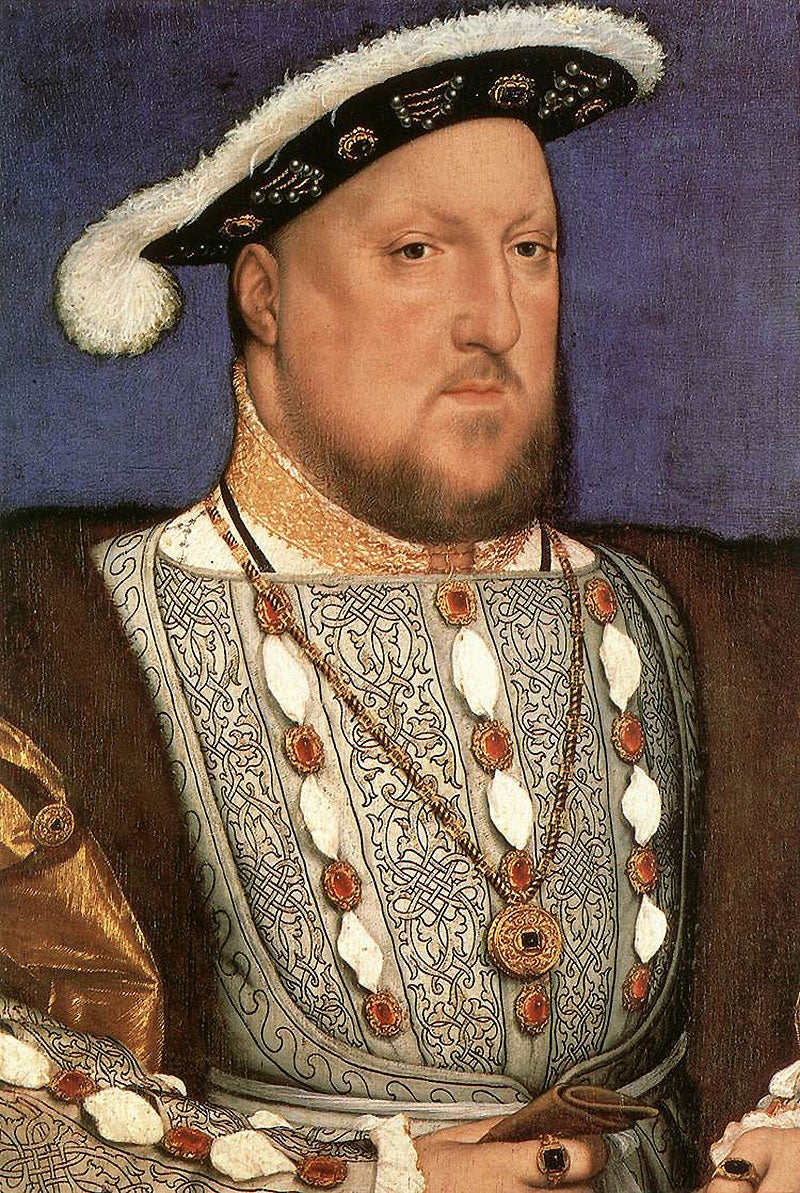Holbein, Hans: Henry VIII (1537)

The face on the coin, on the stamp, are not portraits, even though they may be likenesses. You don't look at the Queen's head on a 10-pence piece and imagine a sitting, in which the monarch posed and an artist observed and fashioned her profile in low relief. No, the Queen's head is simply there on the coin, stamped onto its metal, just as the Virgin's face is present on the surface of a wooden icon.
Hans Holbein was a memorable icon-maker. He established the image of Henry VIII for all time. His standing portrait of the king has influenced every subsequent picture or impersonation. But it is his other, close-up portrait that has real iconic force. This small and portable head-and-shoulders likeness is no bigger than an A4 sheet. It was, perhaps, made to go abroad on a diplomatic mission. It's constructed not only as a portrait but as a substitute effigy. The monarch is identified with the rectangular panel of oak on which he's depicted. His image is fitted to its shape and flattened to its flatness. He is this painted object.
Holbein's high-definition realism, his inexhaustibly accurate observation, are forced into a rigorously artificial design. The most outrageous trick is the way the whole right-hand edge of the king's face, from eye to chin, is made into a precisely straight, precisely vertical line.
Likewise the top of his shoulders becomes a near horizontal line going right across the picture, making the king's torso beneath it into a sub-rectangle. And this vertical and horizontal intersect in a right angle, which defines the top-right rectangle of the pure ultramarine blue background. The edge of back of the head, behind the ear, also has a straight, upright, run, which meets the jutting-out back of the black hat in another right angle. And there's another horizontal in the straight top edge of the chest-piece.
We're also encouraged to see him as a pattern, laid out on the surface of the wood. His body is an ornamental arrangement, made of distinct pieces of opulent fabric – linen, fur, embroidery, gold cloth. The entire figure, though not quite as flat as a traditional icon, doesn't feel much thicker than a quilt. The flesh of the face is subtly shaded without ever acquiring real volume. The torso swells a little, like a thin cushion.
Likewise, the fur-trimmed hat is just a flat pattern. One of the most beautiful sensations of this picture is the way the king's forehead tucks into the hat's opening like folded paper being slipped into a tight envelope.
Finally there is the tassel of fur that spills off the back of the hat in a rounded, spiralling comma. And with that, the king is locked into his image. He is here before us, present on its wooden surface. We can pick him up, hold him in our hands, look him in the eye, rock him like a baby.
The artist
Hans Holbein (1497-1543) is one of those foreign artists who have been honorarily Anglicised. He had a successful European career behind him when he began to work for the Tudor court. It was the height of Henry VIII's "terror". The distinguished heads he painted kept being cut off (Thomas More, Thomas Cromwell, two queens), but Holbein painted on, and kept in with the man at the top. He died in his forties.
Join our commenting forum
Join thought-provoking conversations, follow other Independent readers and see their replies
0Comments